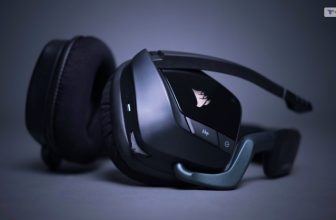
For detecting and viewing objects in darkness or low light, two different technologies are used: night vision and thermal sight.
Despite having a seemingly identical purpose, they work on separate tenets and are applied in various circumstances.
How night vision functions in the dark
To make items visible in the dark, night vision operates by boosting the light that is already there. The system uses an image intensifier, a gadget that gathers any light that is present and turns it into a power signal that is amplified and presented on a screen. Law enforcement officers, security guards, and outdoor enthusiasts frequently employ night vision technology for hunting and camping.
How thermal imaging functions in the dark
On the other hand, thermal imaging makes use of infrared light to find the heat signatures that things release. The system uses a camera to record infrared emissions from things and turn them into images that depict temperature variations between items. When humans or animals remain concealed in the dark or are not apparent to the human eye, thermal imaging can be used to find them. Various other uses for it include medical diagnostics, electrical maintenance, and construction inspections.
Unique benefits of both technologies
Although each technology has distinct benefits, they are employed in various situations and each has drawbacks. For instance, the quantity of light that is available might restrict night vision technology, whilst the range and precision of the camera can limit thermal imaging. The two technologies can, however, be combined into a single gadget that can offer more thorough information on a thing or environment.
The two technologies are already combined in certain products, such as night vision goggles and thermal imaging cameras used by the military. However, personal usage is also possible. More sophisticated and integrated gadgets that incorporate the advantages of both technologies are most likely to appear as technology develops. Visit www.agmglobalvision.com for more information on thermal sights.
How far do thermal scopes have a field of view?
A number of variables, including the scope’s quality, the target’s size, the temperature differential between the target’s location and its surroundings, and meteorological conditions like fog and humidity, affect a thermal scope’s maximum range, including the target’s maximum range.
Typically, thermal scopes can detect heat signatures over ranges of several kilometers or more, some high-end versions are able to do so at significant distances. However, the magnification of the scope’s detector as well as the clarity of the picture could be a constraint on the capacity to identify tiny or low-contrast items at greater distances.
It’s important to keep in mind that weather factors like snow, rain, or high humidity might have an impact on a thermal scope’s range. These factors can diminish picture quality and make it more challenging to identify heat signatures at greater distances.
Overall, a thermal scope’s maximum range will rely on a variety of elements and may change based on the model and the environment it is utilized in. To discover the scope’s maximum effective range, it’s vital to review the manufacturer’s specs and test the device under various scenarios.
To conclude
Overall, thermal scopes are a useful tool for surveillance, hunting, and search and rescue missions because they enable users to identify heat signatures as well as see through fog, smoke, and other obscurants that might reduce visibility.
Read Also:






